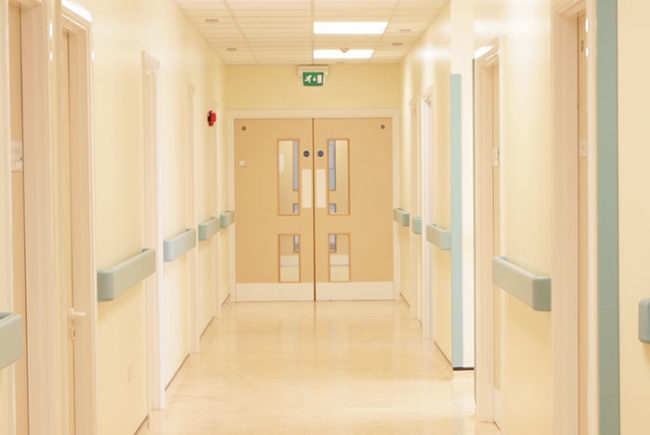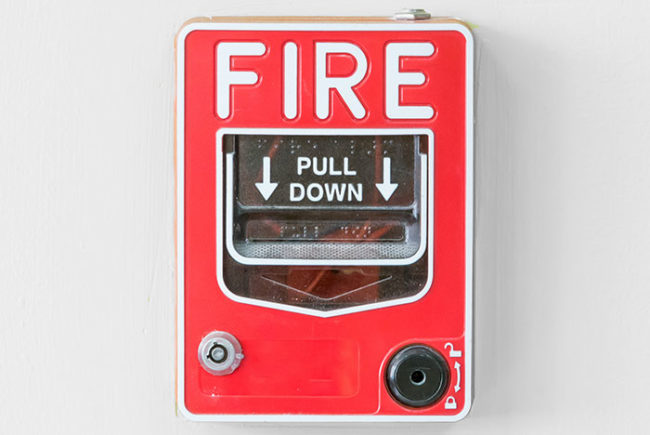ASHE gives guidance on CMS' adoption of 2012 Life Safety Code
The American Society for Healthcare Engineering (ASHE) put together a guide detailing the implications of the Centers for Medicare & Medicaid Services’ (CMS) adoption of the 2012 edition of the National Fire Protection Agency’s Life Safety Code.
The CMS decision changes its Conditions of Participation for hospitals and other health care providers that serve Medicare and Medicaid patients. ASHE’s guide discusses what is included in the final rule, as well as which regulations apply to hospitals. The guide also discusses categorical waivers and deadlines to comply with the recent change.
CDC announces Zika preparedness funds
U.S. states and territories can apply for funds from the Centers for Disease Control and Prevention (CDC) to fight Zika in their areas. More than $85 million has been made available by the Department of Health & Human Services.
The funds will be awarded based on the geographic locations of the two mosquitoes known to transmit Zika virus, Aedes aegypti and Aedes albopictus; history of mosquito-borne disease outbreaks; and size of population. The funds will be used to strengthen incident management and emergency operations coordination; information management and sharing; and community recovery and resilience.
"These funds will allow states and territories to continue implementation of their Zika preparedness plans, but are not enough to support a comprehensive Zika response and can only temporarily address what is needed,” says Stephen C. Redd, M.D., director of CDC’s Office of Public Health Preparedness and Response. "Without the full amount of requested emergency supplemental funding, many activities that need to start now are being delayed or may have to be stopped within months.”
FDA releases draft guidance for 3-D device printing
The Food and Drug Administration (FDA) has developed draft guidance for additive manufactured devices, which includes devices created from 3-D printing. The guidance mainly covers two topics: design and manufacturing considerations; and device testing considerations.
The FDA calls the draft guidance a “leapfrog” guidance, which means it’s only intended to share initial thoughts regarding this emerging technology and that recommendations may change as more information becomes available.
AAMI provides framework to help reduce nonactionable clinical alarms
The National Coalition for Alarm Management Safety, a foundation of the Association for the Advancement of Medical Instrumentation, published a framework to help hospitals reduce the number of nonactionable alarms. The issue is believed to contribute to alarm fatigue, and is a growing concern for the Joint Commission, which began requiring hospitals to establish and implement policies and procedures for managing clinical alarms.
AAMI hopes the framework will offer a “consistent road map,” bringing hospitals from initial planning to optimization.
“This groundbreaking paper provides the structure hospitals have needed to develop sustainable solutions,” said Marilyn Neder Flack, senior vice president of patient safety initiatives and executive director of the AAMI Foundation. “The framework takes the guidance the coalition presented in its “Clinical Alarm Management Compendium” a step further by providing a way for organizations to evaluate and measure their progress. By using this iterative process, nuisance alarms can be eliminated and patient safety will be enhanced.”
NIST releases guide for IT systems security engineering
The National Institute of Standards and Technology (NIST) released a second draft of its “Systems Security Engineering: Considerations for a Multidisciplinary Approach in the Engineering of Trustworthy Secure System.”
The organization says the updated draft provides IT developers with a framework for incorporating cybersecurity measures into the design process. The new NIST publication is intended for anyone who designs, develops, builds, implements, organizes or sustains any type of system from smartphones to industrial and process control systems. The first draft was published in May 2014.
NIST Fellow Ron Ross says the second draft “takes things to a higher level. We are bringing the cyber and physical worlds fully together.”
HHS-sponsored study shows disrobing is vital decontamination method
University researchers found that proper disrobing, including carefully removing clothes and wiping skin with a paper towel or dry wipe, removes up to 99 percent of chemical contamination. Showering and drying off with a towel or cloth provides additional decontamination.
The researchers say the finding suggests the need to avoid the common practice of using high-pressure water from fire engines to shower clothed patients as the first and primary method of decontamination.
The study was sponsored by the Biomedical Advanced Research and Development Authority (BARDA).
“Whether we’re facing a chemical terrorism attack or an industrial accident, every minute counts in protecting health after chemical exposure,” says Richard Hatchett, M.D., BARDA acting director. “This study provides critical scientific evidence of effective actions emergency responders and community partners should consider in their emergency plan.”




